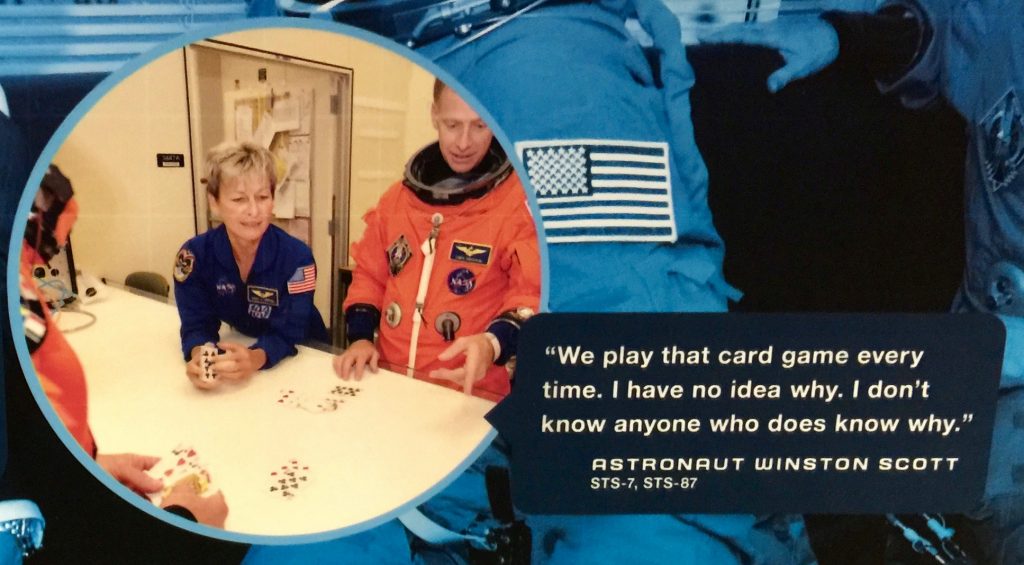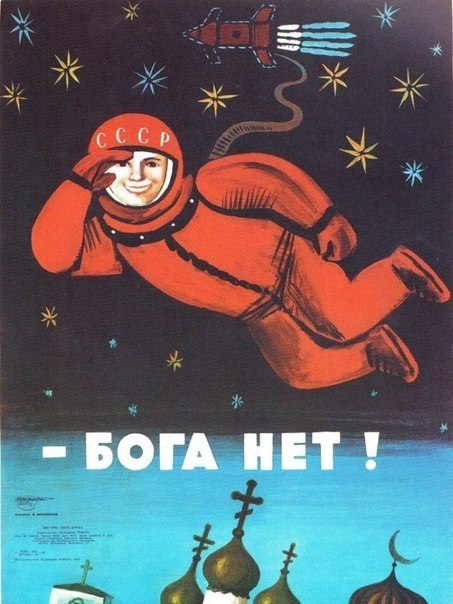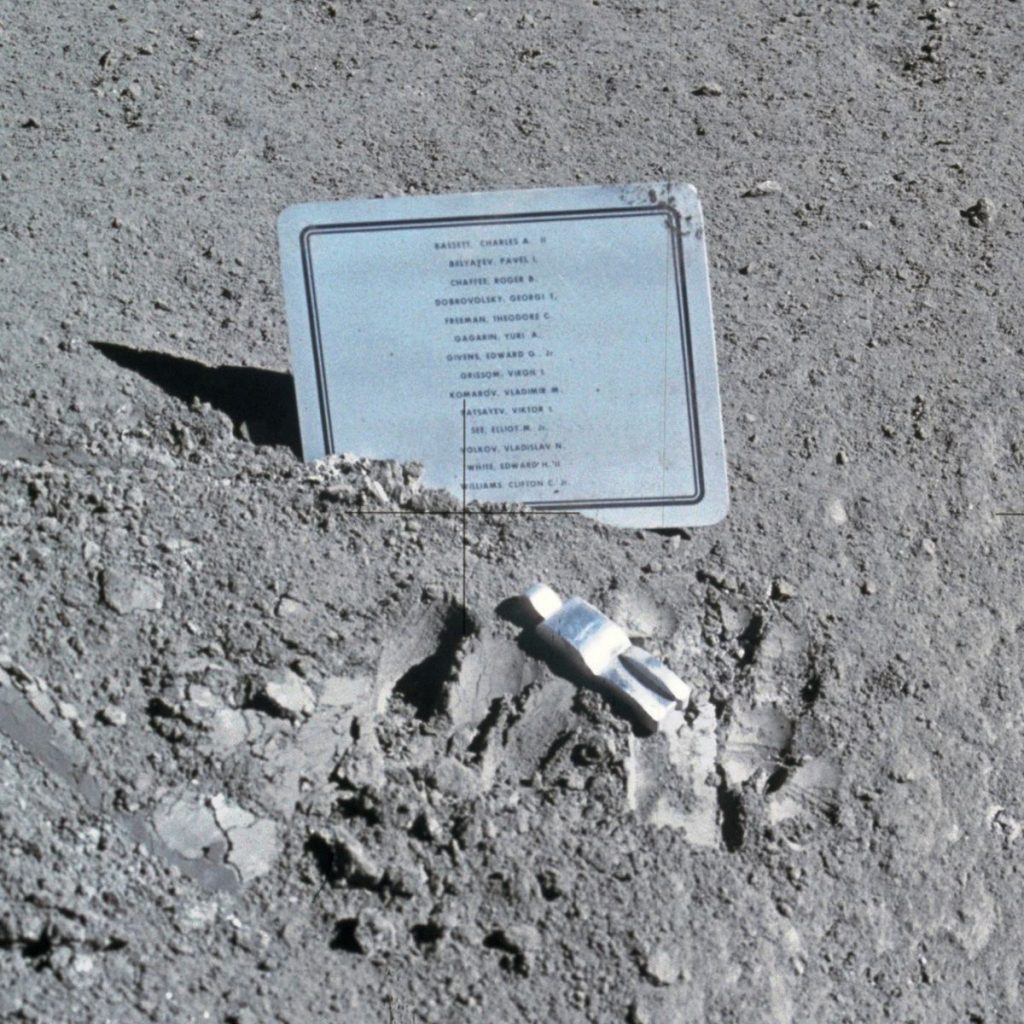In Part 1, I wrote a gonzo ethnography about my experience at a rocket launch in Florida. For Part 2, I will be utilizing historical records, museum didactic text, and astronaut testimony to illustrate that magical and ritualistic practice is heavily engaged with in spaceflight operations. One may speculate that with the extreme emphasis on the (perceived) empiricism of Western science in the realm of outer space affairs, there would be no room for the subjective—let alone magic, ritual, and religion. However, one of the themes that became apparent to me throughout my research is that there exists an enormous amount of mysticism within the field of human spaceflight. Some rituals are performed within the confines of accepted Western religious dogmas, while some fall into the realm of how some anthropologists understand magic and witchcraft.1 The first mystical component to human spaceflight is what writer Frank White has coined “the overview effect.” The term refers to the spiritual oneness that many astronauts report feeling after reaching outer space and seeing our planet from orbiting altitude, with many developing environmental and social justice viewpoints.2 Furthermore, many astronauts report that their time in space was filled with spiritual experiences, including temporal shifts, floods of emotion, and feelings of being a part of something larger than themselves. For a recent example, take what astronaut Ron Garan reports in the beginning of his autobiography:
As I approached the top of this [orbital] arc, it was as if time stood still, and I was flooded with both emotion and awareness. But as I looked down at the Earth—this stunning, fragile oasis, this island that has been given to us, and that has protected all life from the harshness of space—a sadness came over me, and I was hit in the gut with an undeniable, sobering contradiction. In spite of the overwhelming beauty of this scene, serious inequity exists on the apparent paradise we have been given. I couldn’t help thinking of the nearly one billion people who don’t have clean water to drink, the countless number who go to bed hungry every night, the social injustice, conflicts, and poverty that remain pervasive across the planet.
However, astronaut engagements with moments of cosmic sublime go beyond spiritual experiences and approach the realm of ritualized behaviors that would seem familiar to Malinowski and other anthropologists that study symbol, myth, and ritual. Many of these ritual forms of magic come from the ancestors of spaceflight. For American astronauts on launch day, the entire crew must complete a series of rituals before proceeding to the launch pad. First, they must eat a meal of steak and eggs, the Mercury astronaut’s food of choice before a mission. Many contemporary astronauts report that they only pick at the hearty meal due to nerves, but it is never refused for fear that it will jinx the mission. After the meal, the crew participates in a simple card game and must continue playing until the crew’s commander loses.

Malinowski—in his seminal work Magic, Science and Religion and Other Essays— argued that people usually engaged in magical and ritualized behaviors when they were placed in stressful situations, or found themselves with limited control over situations. Despite his colonial generalizations, if we apply these criteria to human spaceflight, I do not believe it is too far-fetched to assert that those who ride automated rockets into the vacuum of outer space are engaging with magic and ritual in order to grasp at a certain amount of control absent within the launch itself.
Magical and ritualized behavior in spaceflight is not only restricted to American astronauts; Soviet—and now Russian—cosmonauts also participate(d) in ritual prior to launching into outer space. On April 12, 1961, as Yuri Gagarin was being driven to the launchpad prior to his mission, he was overcome with a human urge that often manifests itself when one is nervous—or drinks too much coffee. Gagarin charged the driver to pull to the side of the road where he relieved himself on the rear passenger bus tire before re-boarding and rocketing his way into the history books. Due to his mission being successful—and for fear of being jinxed should they not perform the same ritual—every cosmonaut after Gagarin has also had the bus driver pull over so that they may micturate on the rear passenger bus tire prior to launch; women are not exempt from this, carrying vials of their own urine to splash on the bus wheel (Weibel and Swanson 2006). Cosmonauts and NASA astronauts launching on Soyuz to the International Space Station today still perform this ritualized urination. Furthermore, all those who wish to board a Russian spacecraft must watch the 1969 Soviet film Белое солнце пустыни (Beloye solntse pustyni—White Sun of the Desert) the night before launch.

Further afield, during the Space Race, there was also a battle between the two superpowers over the predominantly Christian United States and the state-atheism of the Soviet Union. One prominent Soviet propaganda poster after Gagarin’s flight featured a grinning cosmonaut on a spacewalk, orbiting above a Catholic church, a Russian Orthodox church, and a mosque, with two bold words separating the spacewalker and the houses of worship: бога нет! (boga nyet—There is no god!). Conversely, United States astronauts on Apollo 8 read from the Book of Genesis after becoming the first humans to circle around the moon. Furthermore, after Apollo 11 successfully landed on the surface of the moon, Buzz Aldrin asked for a moment of silence so that he might partake in the ritual consumption of bread and wine. Communion, therefore, became the first food and drink consumed by humans on another celestial body (Weibel and Swanson 2006).
Lastly, there exists many Earthly and extra-planetary memorials and ritualistic remembrances of those who have lost their lives in the name of space travel, including one on the moon. On Mars, the Pathfinder spacecraft—which brought Sojourner, the first rover on Mars—was renamed the Carl Sagan Memorial Station after it had landed. In popular culture, Carl Sagan’s son helped write an episode of Star Trek: Enterprise in which the crew visits the Memorial Station, which was imagined as being inscribed with a quote from Sagan: “Whatever the reason you’re on Mars, I’m glad you’re there, and I wish I was with you.”

Image credit: NASA
Magic and ritual is deeply engrained in both the practice and imaginaries of technoscientific endeavors. The more that anthropologists shift their gaze toward the so-called “hard” sciences—as well as the scientists that perform their duties—the more we can reveal the illusion of pure objectivity within laboratory sciences. Perhaps when science is viewed as a human practice—wrapped up with all the imperfections inherent within any human endeavor—as opposed to some outside force able to impart supernatural objectivity upon an expert class, we can begin to leverage science as an exercise for liberation and mutual aid rather than a practice that today tends to first benefit the forces of colonialism and imperialism.
Further reading & cited:
Weibel, Deana L., and Glen E. Swanson. 2006. “Malinowski In Orbit: ‘Magical Thinking’ in Human Spaceflight.” Quest: The History of Spaceflight Quarterly 13 (3): 53–61.
- Again, I would like to refer the reader to my disclaimer in the beginning of Part 1 in which I describe the colonial baggage that is attached to words like “magic” and “witchcraft.” ↩
- While the sentiment is nice, Jordan Bimm argues that models of Earth are political objects and the claims argued by White are cultural claims—and in particular, Western, colonial cultural claims. See: Bimm, Jordan. 2014. “Rethinking the Overview Effect.” Quest: The History of Spaceflight Quarterly 21 (1): 39–47. ↩
Taylor, nice, very nice. My only thought here is that, instead of simply acknowledging the colonial usages of terms like “magic,” we think a bit more carefully about their implications. Both Malinowski and Durkheim differentiate magic and religion by saying that one is private and manipulative while the other is obligatory and celebratory. I found this difference useful in a paper in which the question was how to choose between two metaphors for advertising, one which likened advertising to magic, the other which likened advertising to religion. There is something to be said for both metaphors, but at the end of the day, Malinowski was clearly onto something when he labeled advertising the modern form of magic.
This distinction does, however, cut across another, derived from Protestant theology, in which religion is a personal relationship between the believer and God, revealed in experiences felt to be holy, instead of a ritualized relation to a church as a community, the Catholic view against which Protestantism defined itself. Here I am struck, first, by the very Protestant-seeming description of the “Holy Fire” of takeoff as you describe it but also, second, by the way in which the description of the Earth as a fragile, blue ball floating in the immenseness of space has become a standard trope for astronauts describing their experience.
When I visited NASA in 1999, I was perplexed to find small chalices (about 2 inches high) for sale in the gift shop, which I could only assume were replicas of the one Buzz Aldrin used for his Communion on the first moon landing. I found it an oddly crass little artifact, that its place in an otherwise secular space flight became an occasion for the gift shop transaction’s intrusion into its sphere as a sacred object.
Would you have been surprised to discover similar objects for sale while visiting temples, cathedrals, or museums? Why did you feel perplexed in this case?
Because the space program is overwhelmingly secular, and rightly so. Noting Aldrin’s Communion is an important part of the history of moon exploration. But selling cheesy chalices has nothing to do with space otherwise, and is not particularly respectful of the religious rite either.